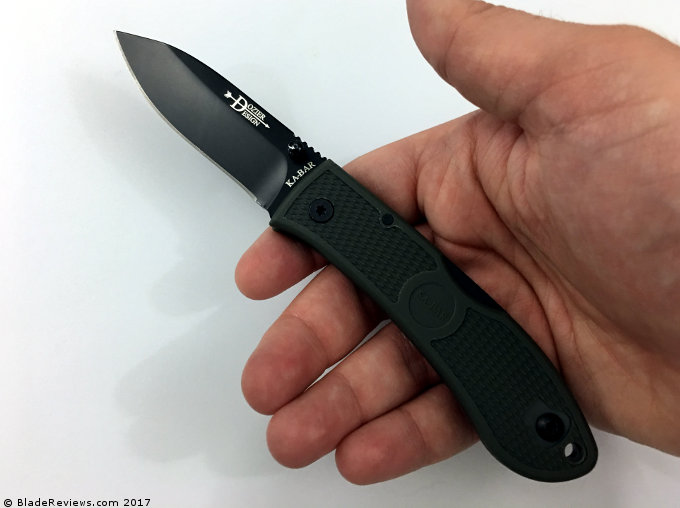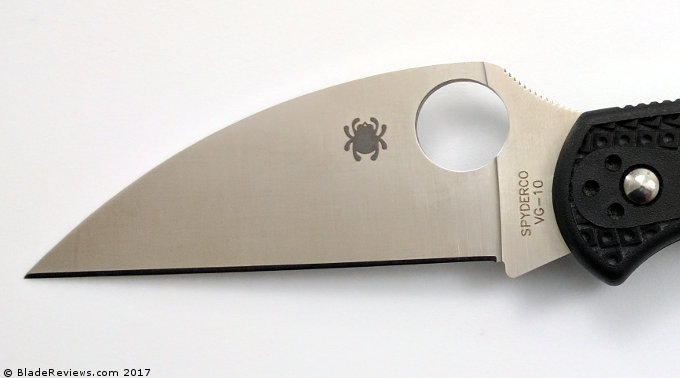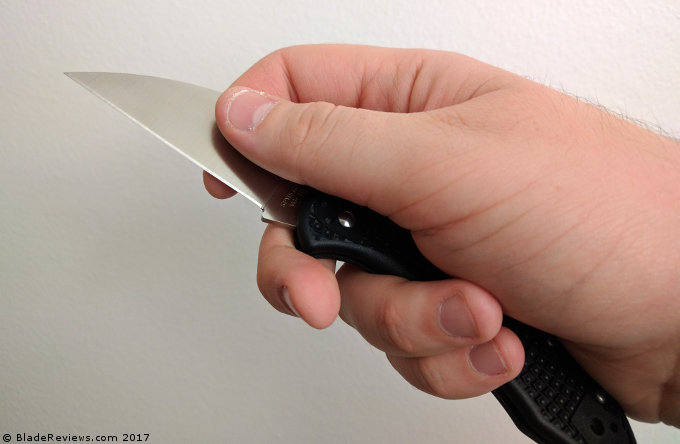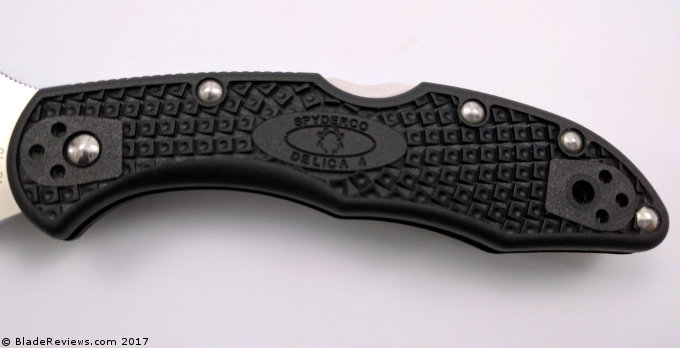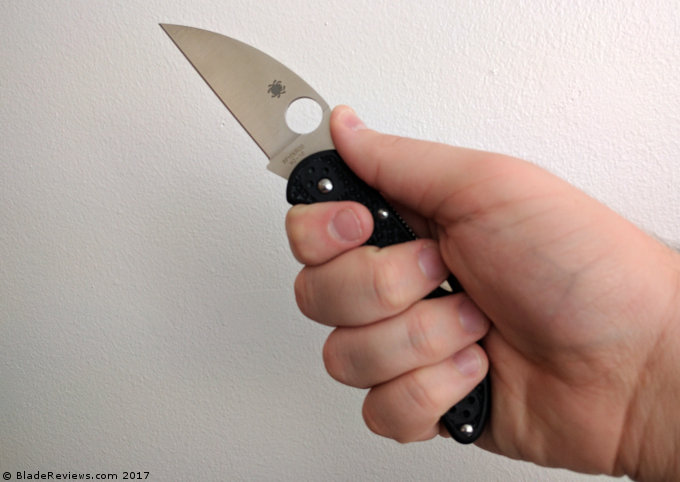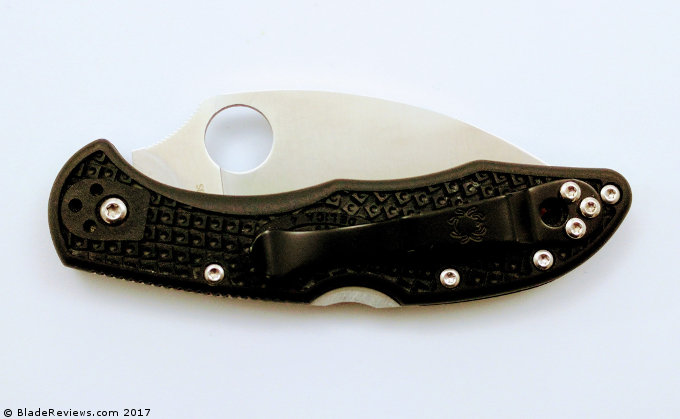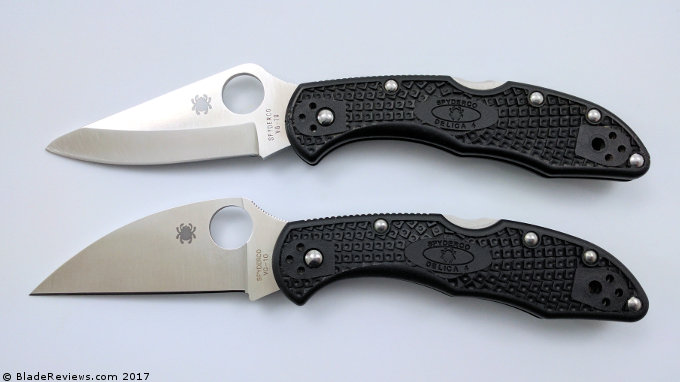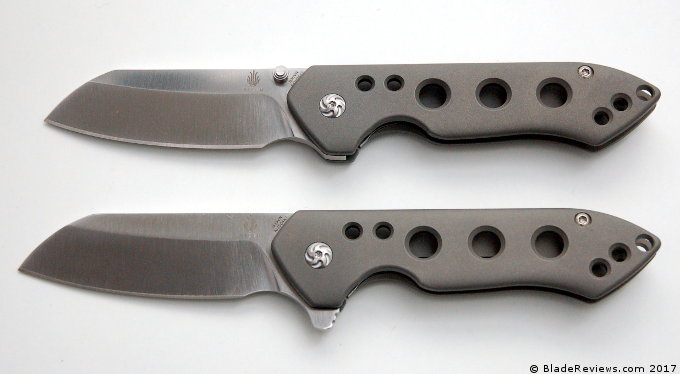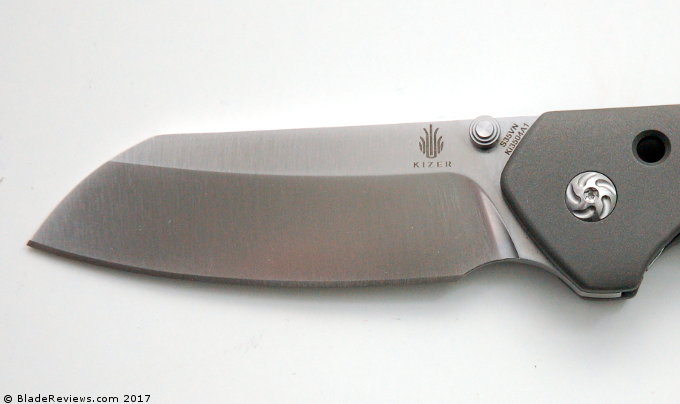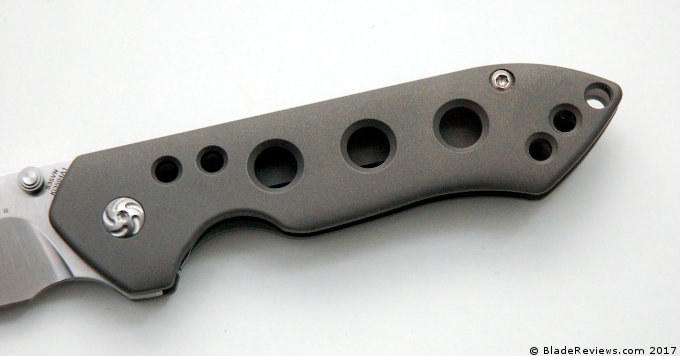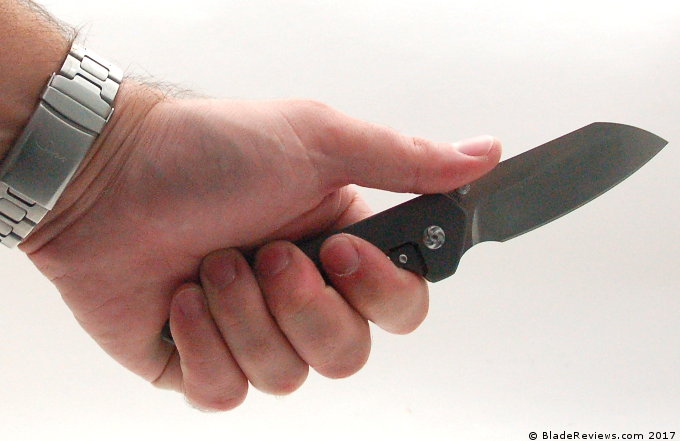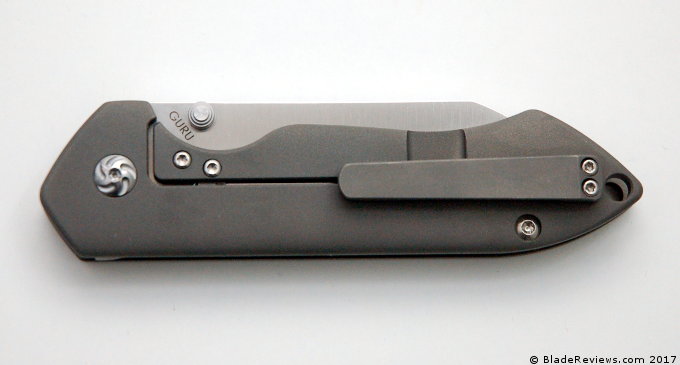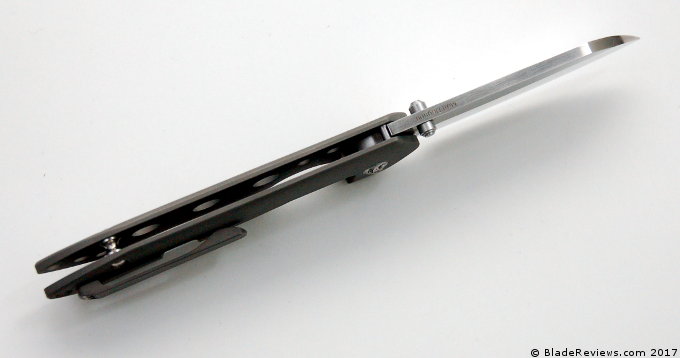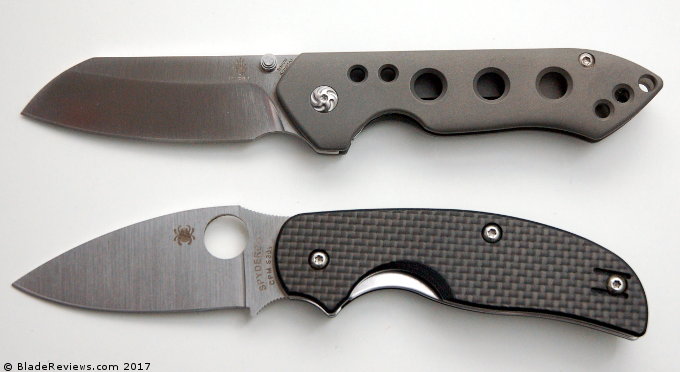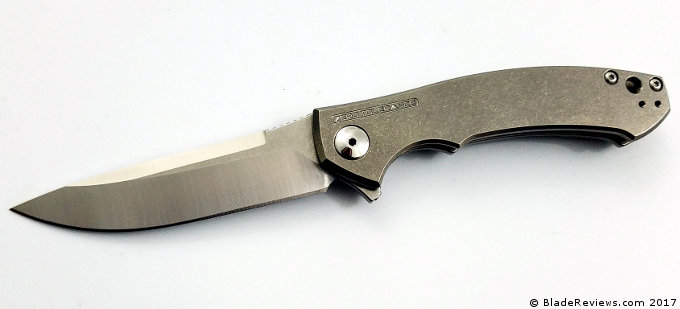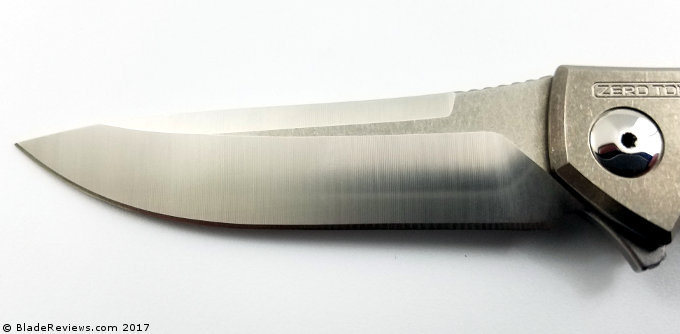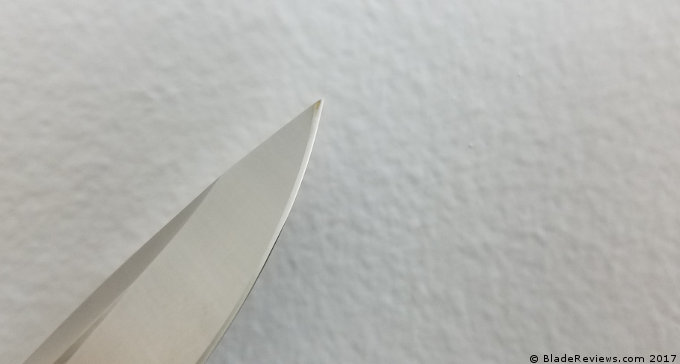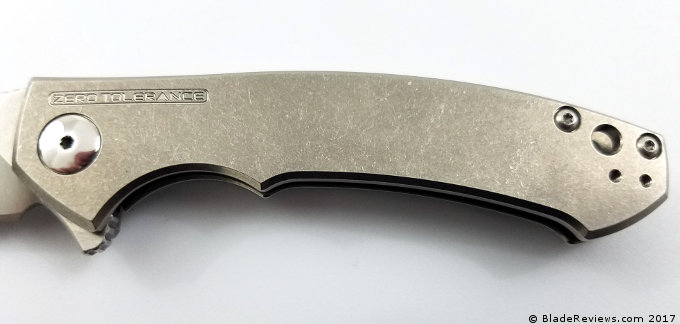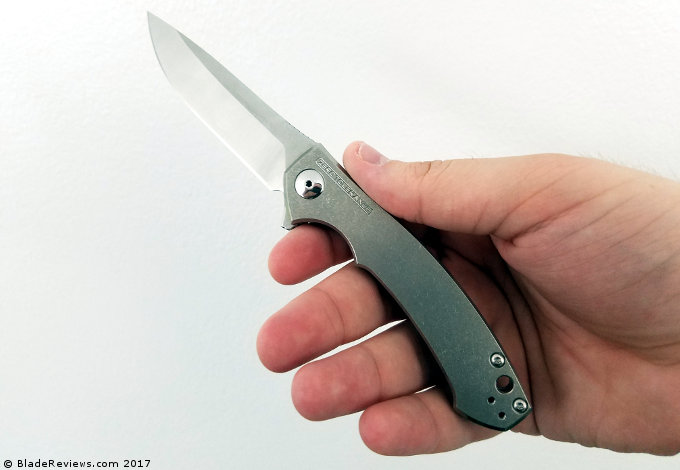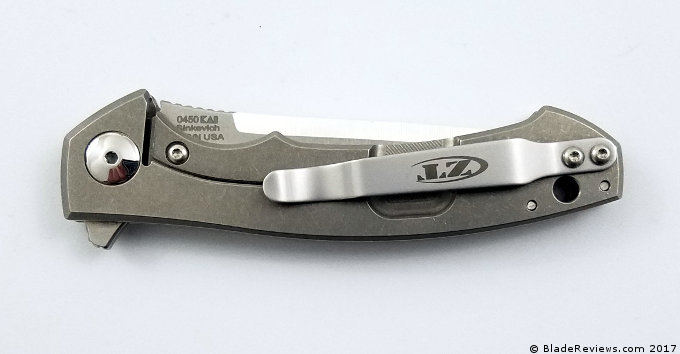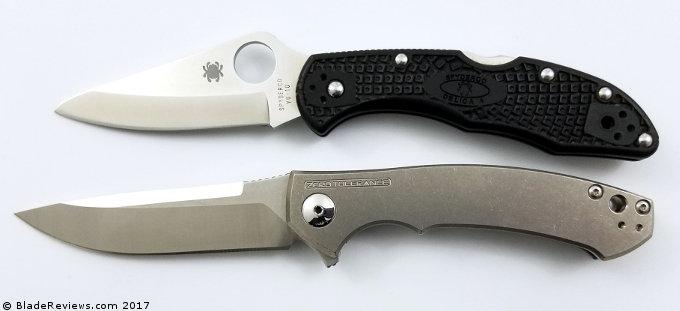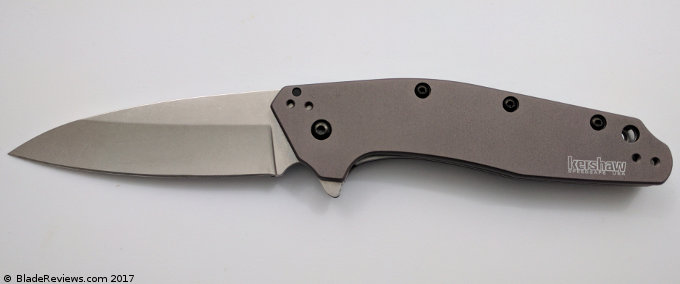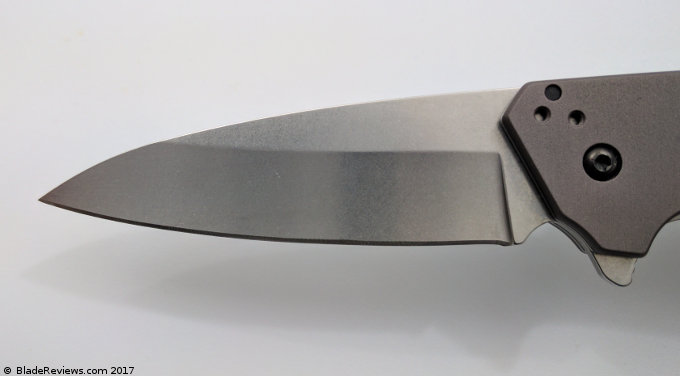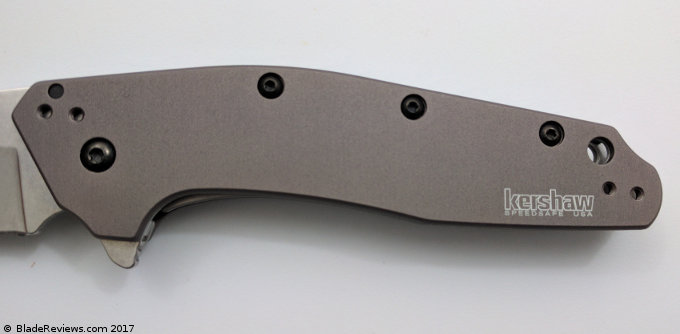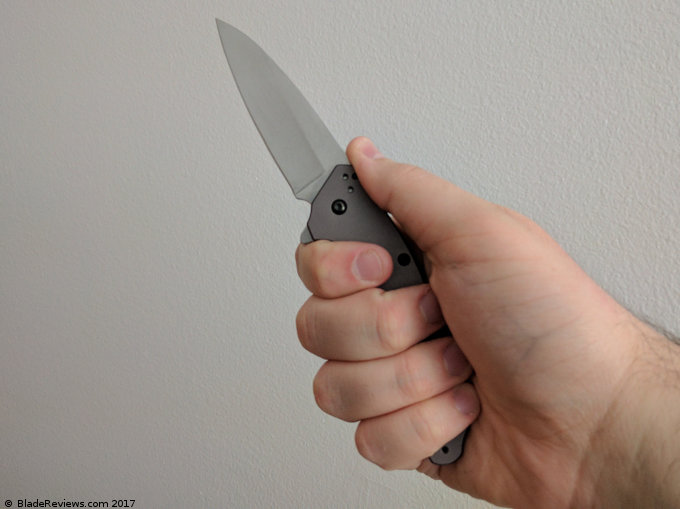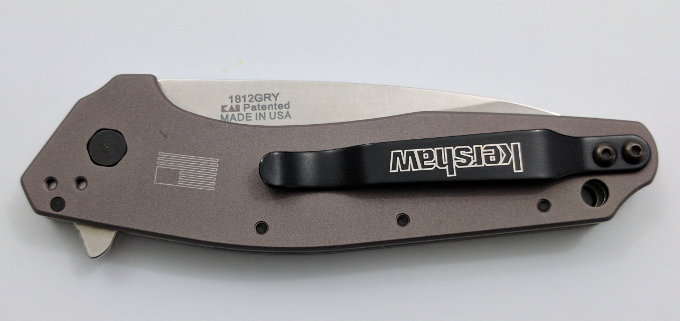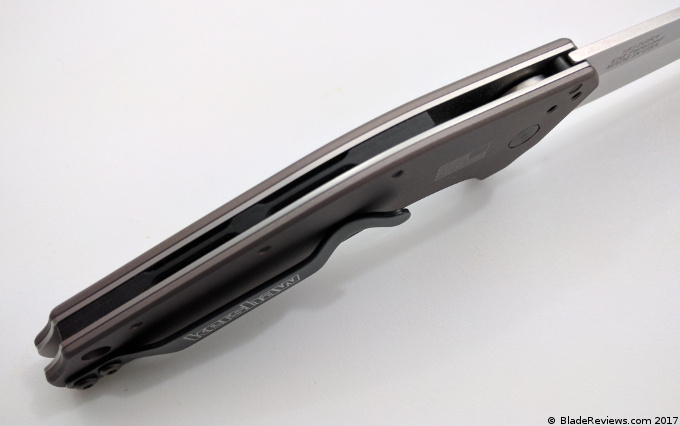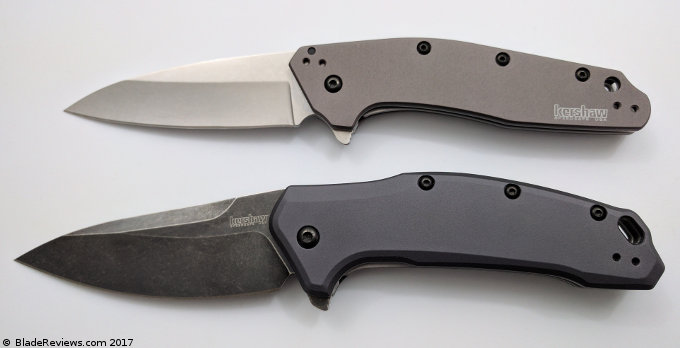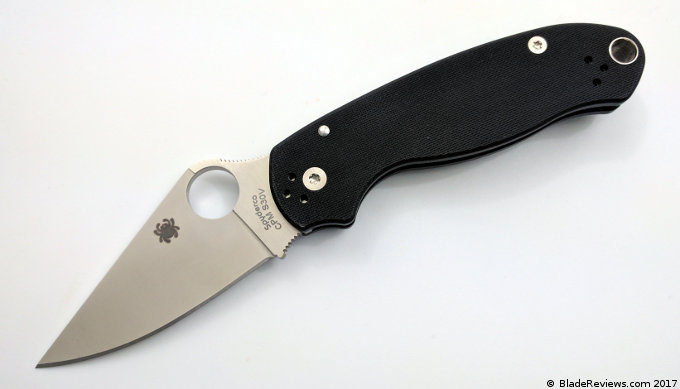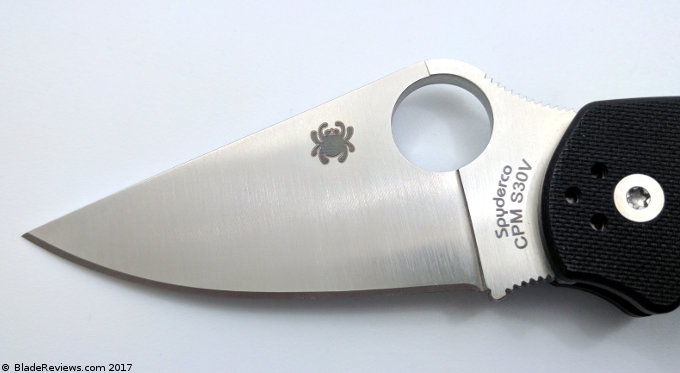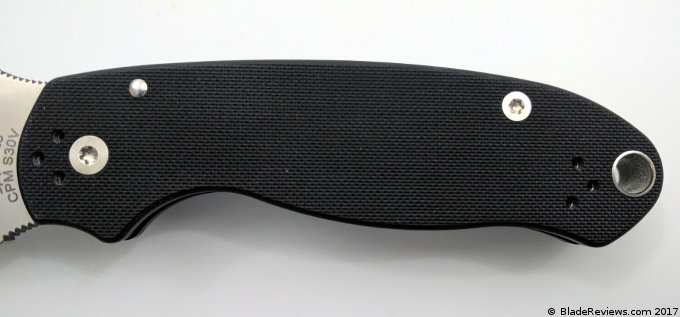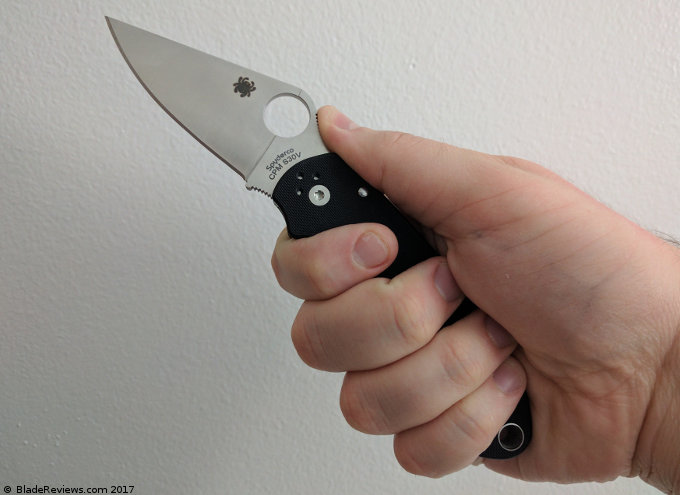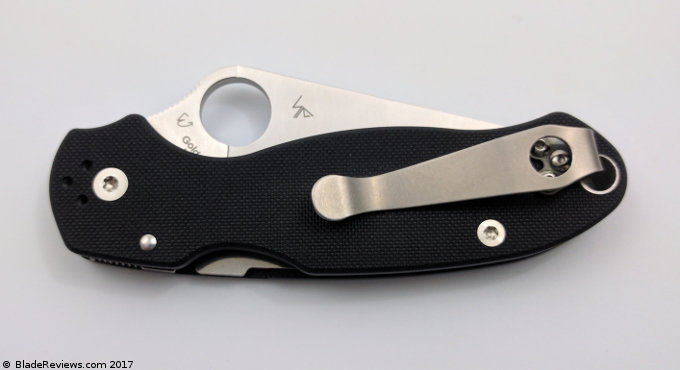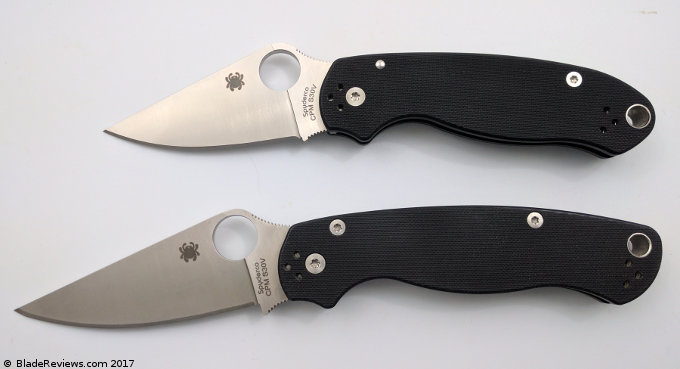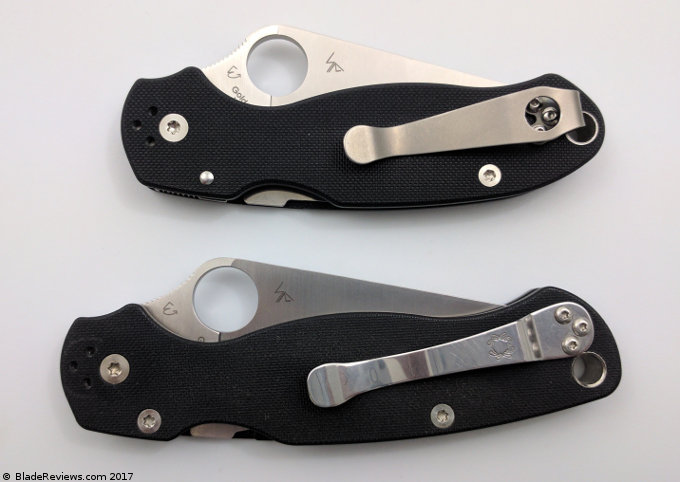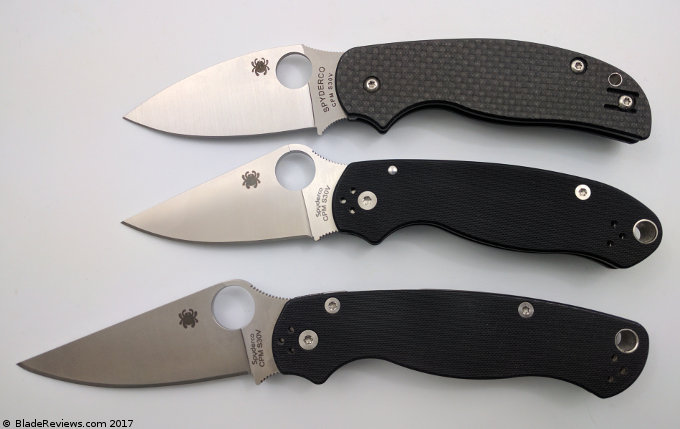Last Updated: July 27, 2019
The KA-BAR website tends to be pretty laconic with its product descriptions in general, but the terse, colorless description they provide for the KA-BAR Dozier Folding Hunter would make the editor of technical manuals nod off mid-sentence:
“Award-winning lock back designed by Bob Dozier is an affordable, practical all-purpose knife appropriate for daily tasks. Features a reversible pocket clip and thumb stud.”
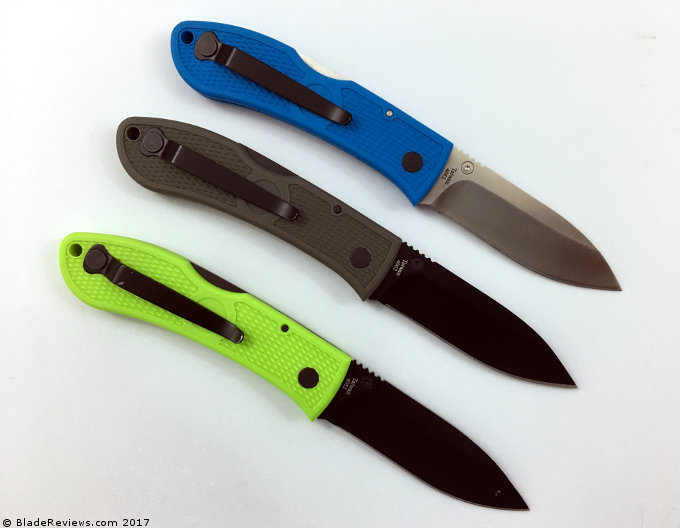
Buy the Ka-Bar Dozier Folding Hunter at BladeHQ
I can certainly sympathize with the KA-BAR copy editor. On a superficial level, what is there to say about the simple Dozier Folding Hunter? It was originally released in 2003, and as far as I can tell it has hardly changed at all since then, submerged in the nearly-empty waters of the sub-$20 big brand knife bracket like one of those ancient fish that have kept their prehistoric forms for millions of years.
On the other hand, such longevity without change is virtually unheard of, especially in the budget realm, where we’ve already forgotten that the Spyderco Tenacious used to be the absolute cutting edge under $40 just a few years ago. Like the Tenacious, the Dozier won Best Buy at Blade Show the year it released. Unlike the Tenacious, the Dozier remains relatively unchallenged at its price point. It’s still one of the original freaks of the knife world, a sui generis offering that nothing much really directly compares with.
It was a knife I have been meaning to try out for a long time. So I picked up a trio of Dozier Folding Hunters to see what there was to see. Is it still a watermark in the budget realm, or a fossil from a different age? Let’s take a closer look.
General Dimensions and Blade Details
The Dozier has a blade length of 3”, a handle of 4-3/16”, and an overall length of 7-1/4”. It weighs 2.4 oz and is made in Taiwan. There is a smaller Dozier but I think the full-size model is the one you should go with. It still weighs nothing and you get a jump up in utility with the increased blade size.
A fit and finish note: while general fit and finish was good across all three Doziers I purchased, there was some variance between the blades grinds. The blue one fared the worst, with a noticeable recurve. The olive green sample was better, albeit with an uneven edge grind – the sharpened edge goes down farther on side than the other. Leslie’s Zombie Green model was far and away the winner, with a truer edge and clean, consistent grind.
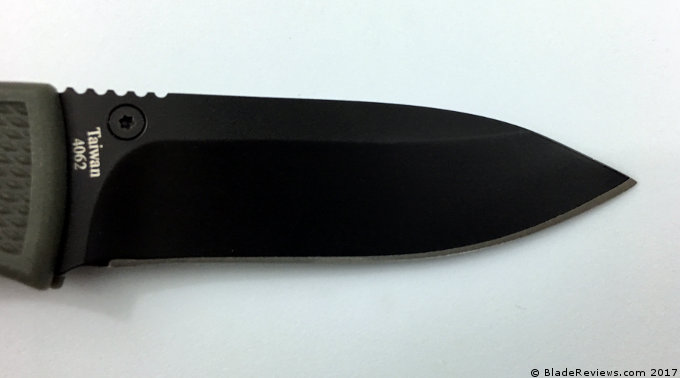
I don’t like playing the “What do you expect for $20” card because, even when I shell out $20, I expect a good knife made to consistent quality standards. So it’s definitely a mark against this knife that there is so much variance here. However, I would be fibbing if I said it made the slightest bit of difference in cutting or sharpening.
Depending on where you go this model’s blade is called a “spear” in some places, a “hunter” elsewhere, and a “drop point” in still others. Hairsplitting aside, it’s a great blade shape; there’s not much you can’t do with it, and the 3” length is just right. It’s also another exhibit in the case for hollow grinds in mid-size blades: I think they perform better overall, especially outside of food prep tasks. Even with a fairly narrow blade profile, the Dozier zips through material effortlessly.
It’s easy to get repetitive in describing steels, but to be brief: AUS-8 is just great. Highly corrosion resistant, easy to sharpen, and offering good edge retention, I think it is demonstrably better than 8Cr13MoV. It’s the perfect steel for a first-time knife user or for someone who doesn’t really care about knives and just needs something that will work for a long time. One of these Doziers went to work with my girlfriend every day and she appreciated that it held up well to regular use. Even for us enthusiasts it holds plenty of appeal.
Handle, Ergonomics, and Pocket Clip
The Dozier’s handle is stripped of all embellishment. A simple bow shape, designed to accommodate the curvature of the human hand. Construction is equally simple, a two-piece Zytel build, with the partial backspacer integral to the off-side scale. Diamond texturing molded into the Zytel imparts a decent amount of grippiness here.
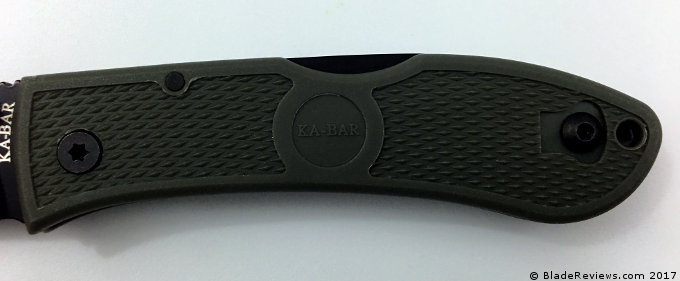
The handle’s simplicity works in its favor. One issue with ergonomic details like finger choils is that they always mean the knife favors a certain grip. Even a wonderfully comfortable knife like the Strider PT CC works better in the forward grip than in reverse or pinch grips because of its famous double finger grooves. The Dozier’s simplicity may not be as immediately gratifying, but it is never problematic, never less than accommodating. Try and find an uncomfortable grip on this knife: if you manage to do so, you’re probably holding it by the blade.
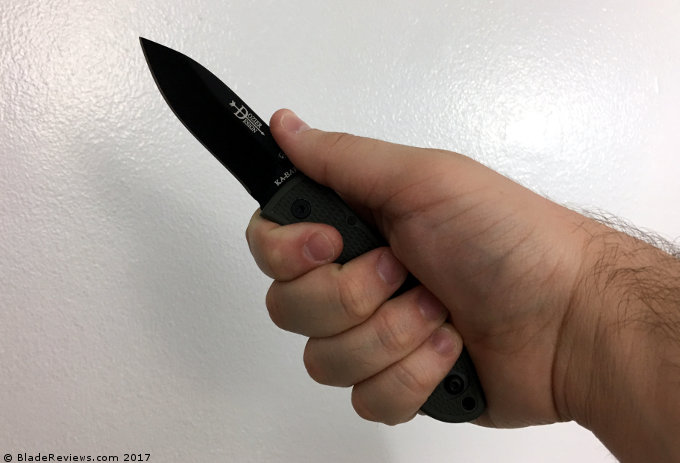
The reversible pocket clip is long and slender, and recessed into the handle like a Sebenza clip – a nice detail because it prevents side-to-side wiggle. Although thin, it is made from a fairly thick piece of steel – mostly a good thing as it is extra durable, but it does mean that retention is pretty tight. Things should loosen up over time (and thankfully the clip’s retention point is on a non-textured surface in the center of the handle), but even out of the box, it’s far from unusable. The knife itself is nice and thin in addition to being lightweight – an easy carry in almost all circumstances.
Deployment and Lockup
For deployment the Dozier utilizes a single, reversible thumb stud. I’ve always like the single thumb stud idea – just seems like a more efficient use of material, which of course is in keeping with the generally efficient, streamlined design of this knife.
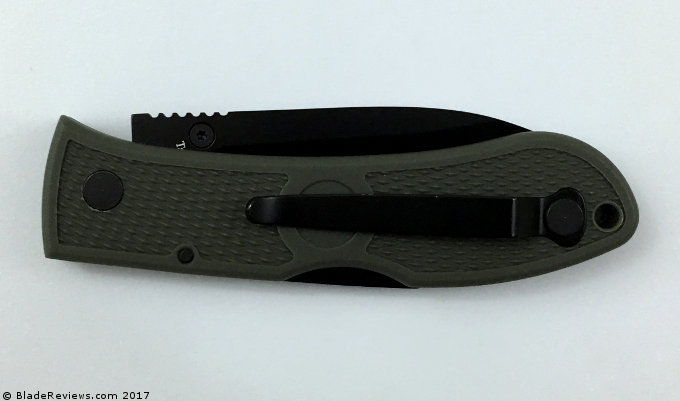
As with any lockback there’s friction during deployment, but the blade can be flicked out or slow rolled with relative ease after a little break-in. One interesting element of the Dozier is the complete absence of washers or bearings: instead, the blade pivots on raised, washer-shaped areas of Zytel. Even with this rudimentary construction, the primary sensation during opening is one of smoothness. This was consistent across all three review samples.
The Dozier’s lockback has some definite spring to it. It snaps into an open position and disengages with an audible pop. Lockup is sound: there’s no side-to-side play, although a slight up and down movement can be detected. Almost all lockbacks I’ve owned exhibit this to greater or lesser degrees so I’m not worried about it. I’m confident in saying that the Dozier could withstand a fair bit of hard cutting before you’d notice any issues with the lock. And along with the clip and thumb stud, it means the Dozier is 100% ambidextrous.
KA-BAR Dozier Folding Hunter Review – Final Thoughts
The Dozier is a knife from a different age. It predates our modern obsessions with lock types, flipping action, celebrity designers (Bob Dozier may be a legend but his name doesn’t have the current cachet of a Jesse Jarosz or Rick Hinderer) and all other knife nerd fallalery. There’s nothing wrong with enjoying these things, but there’s something bracing about carrying a knife that ignores so much of them and still functions so well. It’s a real tonic for today’s overexposed, oversaturated, overanalyzed knife world.
After fourteen years on the market, the Dozier is still one of the best deals around. It makes no real compromises and has no real weaknesses other than a lack of visual appeal. An enthusiast would never want this to be his only blade, but realistically it does all that you should ask of a folding knife. It won’t be my last knife – and it won’t be yours – but it could be if we ever shake the knife collecting bug.
- AUS 8 stainless steel blade
- Designed by Bob Dozier
- Dual thumb studs for quick deployment
- Reversible pocket clip
Editor: I recommend purchasing the Ka-Bar Dozier Folding Hunter at Amazon or BladeHQ. Please consider that purchasing anything through any of the links on this website helps support BladeReviews.com, and keeps the site going. As always, any and all support is greatly appreciated. Thank you very much.
